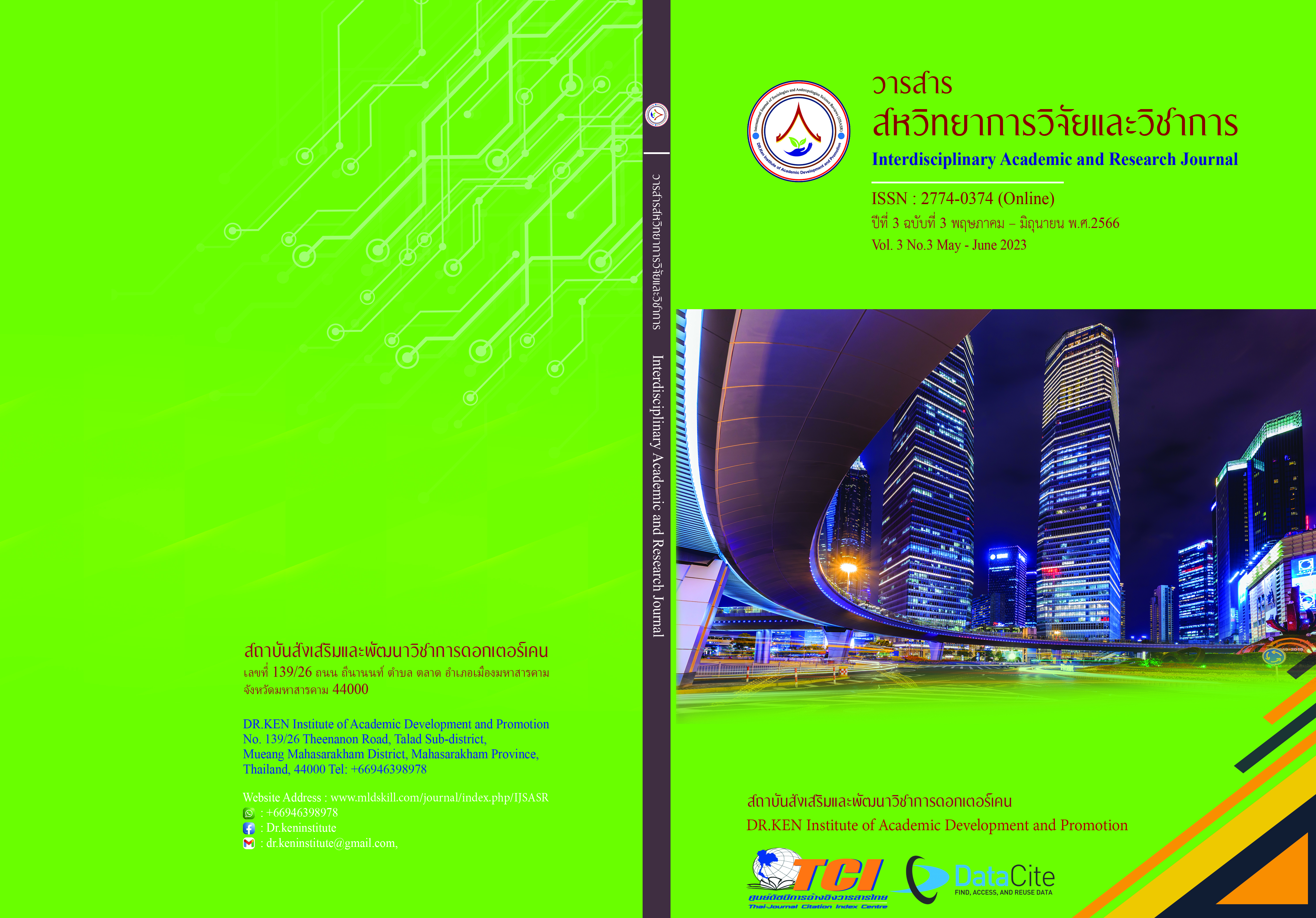Participation of Resident Forces, District Protection Suit to Drive Amendments Problems of Unrest in the Narathiwat Province Area
DOI:
https://doi.org/10.14456/iarj.2023.141Keywords:
Participation;, Local Force; , Resolving Unrest in Narathiwat ProvinceAbstract
Members of the Volunteer Guard in the Southern Border Provinces are local forces, especially members of the Volunteer Guard who perform duties in sub-district protection units that control operations with military units on the ground, to support security operations specifically as assigned by the Internal Security Operations Command. Participation is, therefore, to make people in the area feel like ownership together, have a good attitude, have independent thinking, and have decision-making power, There are various activities together that can solve problems and develop communities by themselves. Thus, this research has the objective To study the level of participation of the local forces of the sub-district protection unit in driving the problem-solving of insurgency in Narathiwat Province. using quantitative research methods, The population studied was 1,683 residents of the Tambon Protection Unit in Narathiwat Province. The researcher used the ready-made calculation formula, the sample size of Krejcie and Morgan, which determined that the proportion of the population was 0.5. With a tolerance of 5% and a confidence level of 95%, the sample size can be calculated with a small population of 10 people or more, of which the sample size is 312.88 persons. 314 persons using stratified random sampling, a stratum sampling of the population. Data were collected using a questionnaire. Data were analyzed by mean and standard deviation (SD). The research findings were: Participation of local forces in the sub-district protection team to drive the problem-solving Unrest in Narathiwat Province Overall participation in the operation Overall, it was at a high level in all aspects. When sorted by the average from the most to the least, they were the participation in the operation, the participation in the benefits, and the participation in the evaluation and participation in decision making, respectively.
References
ชัยรัตน์ มาสอน ชาญชัย ฮวดศรี และสุรพล พรมกุล. (2565). การมีส่วนร่วมของประชาชนต่อการปกครองส่วนท้องถิ่นอำเภอน้ำพอง จังหวัดขอนแก่น. Journal of Roi Kaensarn Academi, 7(1), 336-354.
ฐิติอลีนา ใจเพียร. (2558). การมีส่วนร่วมของประขาขนในเขตเทศบาลตำบลเหมืองง่า อำเภอเมืองลำพูน จังหวัดลำพูน ภายใต้กระบวนการจัดทำแผนพัฒนาท้องถิ่น. วิทยานิพนธ์รัฐประศาสนศาสตรมหาบัณฑิต : มหาวิทยาลัยเนชั่น.
ที่ทำการปกครองจังหวัดนราธิวาส กลุ่มงานความมั่นคง. (2565). การพัฒนาการของสถานการณ์และความคืบหน้าในการแก้ไขปัญหาและการพัฒนาพื้นที่จังหวัดชายแดนภาคใต้ของรัฐ.นราธิวาส. นราธิวาส: ที่ทำการปกครองจังหวัดนราธิวาส.
ปัณณทัต บนขุดทด. (2562). การมีส่วนร่วมของประชาชนในการพัฒนาชุมชน ตำบลอิสาณ อำเภอเมือง จังหวัด บุรีรัมย์. วารสารบัณฑิตศึกษามหาจุฬาขอนแก่น, 6 (1), 209-222.
ผ่องพรรณ เทียมเกาะ และ ราเชนทร์ นพณัฐวงศกร. (2563). การมีส่วนร่วมของประชาชนในการจัดทำแผนพัฒนา ท้องถิ่น (พ.ศ. 2561-2565) ขององค์การบริหารส่วนตำบลอำแพง อำเภอบ้านแพ้ว จังหวัดสมุทรสาคร. วารสารบัณฑิตศึกษามหาจุฬาขอนแก่น, 7 (1), 146-159.
สุวัฒน์ คงแป้น. (2552). ชุมชนศรัทธา "กัมปง ตักวา" ทางรอดของการแก้ปัญหา จังหวัดชายแดนใต้. ปัตตานี : เครือข่ายชุมชนศรัทธา.
Cohen, J. M., & Uphoff, N. T. (1980). Participation’s Place in Rural Development: Seeking Clarity Through Specificity. New York: World Development.
Cohen, J.M., & Uphoff, N.T. (1981). Rural Development Participation: Concept and Measure for Project Design Implementation and Evaluation: Rural Development Committee Center for International Studies. New York: Cornell University Press.
Krejcie, R.V. & Morgan, D.W. (1970). Determining Sample Size for Research Activities. Educational and Psychological Measurement, 30(3), 607-610.
Downloads
Published
How to Cite
Issue
Section
License
Copyright (c) 2023 พิรัลรัตน์ รุ่งสาย, อิบรอฮิม สารีมาแซ

This work is licensed under a Creative Commons Attribution-NonCommercial-NoDerivatives 4.0 International License.
Copyright on any article in the Interdisciplinary Academic and Research Journal is retained by the author(s) under the under the Creative Commons Attribution-NonCommercial-NoDerivatives 4.0 International License. Permission to use text, content, images, etc. of publication. Any user to read, download, copy, distribute, print, search, or link to the full texts of articles, crawl them for indexing, pass them as data to software, or use them for any other lawful purpose. But do not use it for commercial use or with the intent to benefit any business.
















.png)


